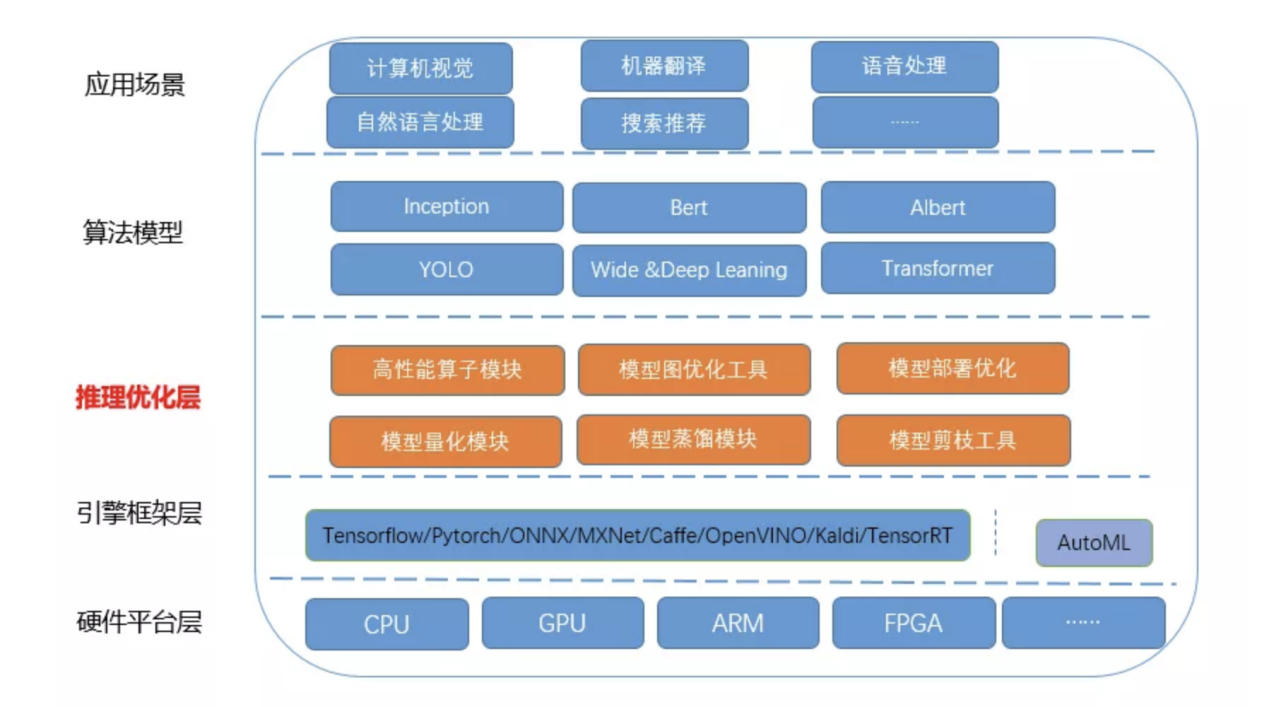- Security
- Artificial Intelligence
- Cloud Phone
- Solutions

Application Scenarios
Describes the fields where AI systems can be applied, including but not limited to computer vision, machine translation, speech processing, etc.
Algorithm Models
This layer includes algorithmic models for specific application scenarios, such as:
- Inception: A deep learning model for image recognition.
- Bert: A bidirectional encoder model for natural language processing.
- Albert: A lightweight variant of Bert, used for natural language understanding tasks.
- YOLO: A convolutional neural network for real-time object detection.
- Wide & Deep Learning: A method combining deep and wide learning, used for recommendation systems and predicting advertising click-through rates.
- Transformer: An attention mechanism model widely used for sequence-to-sequence tasks such as machine translation.
High-Performance Operator Module
Provides underlying computational operations such as matrix multiplication and convolution, which are fundamental for building deep learning models.
Model Graph Optimization Tools
Used to optimize the computational graph of models to improve execution efficiency and performance.
Model Deployment Optimization
Involves optimization measures for deploying trained models into a production environment.
Inference Optimization Layer
Optimization aimed at the model inference process to accelerate the model's prediction speed.
Model Quantization Module
Converts the model's weights and activations from floating-point numbers to integers, reducing model size and improving inference speed.
Model Distillation Module
Transfers knowledge from large, complex models to smaller models through knowledge distillation techniques.
Model Pruning Tool
Removes unimportant weights or neurons in the model to simplify its structure without significantly affecting performance.
Engine Framework Layer
Provides a variety of deep learning frameworks and engines, such as Tensorflow, Pytorch, ONNX, etc., for model development and training.
AutoML
Automated machine learning processes for the automatic design and optimization of machine learning models.
Hardware Platform Layer
Describes the hardware platforms on which AI models can run, including:
- CPU: Central Processing Unit, general-purpose computing hardware.
- GPU: Graphics Processing Unit, adept at parallel computing, commonly used for deep learning.
- ARM: A microprocessor architecture often used in mobile devices and embedded systems.
- FPGA: Field-Programmable Gate Array, customizable hardware logic.
- And so on.
